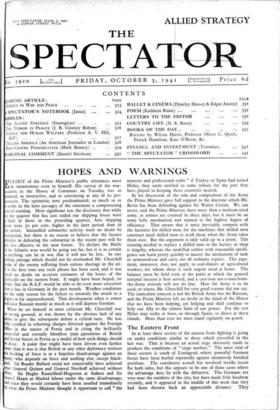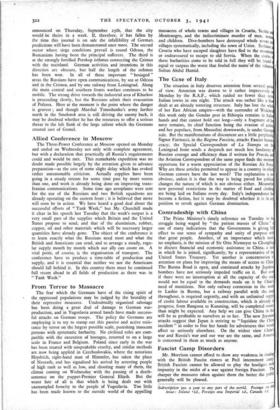The Eastern Front
In at least three sectors of the eastern front fighting is going on under conditions similar to those which prevailed in the last war. That is because an actual siege obviously tends to produce the conditions of " siege warfare." The most vital of these sectors is south of Leningrad, where powerful German forces have been hurled repeatedly against intensively fortified positions. The continuous assault has involved terrific losses for both sides, but this appears to be one of those cases where the advantage does lie with the defensive. The Germans are very near the outskirts of the city, but have made little headway recently, and it appeared in the middle of this week that they had been thrown back an appreciable distance. They announced on Thursday, September 25th, that the city would he theirs in a week. If, therefore, it has fallen by the time this journal is on sale the infallibility of German_ predictions will have been demonstrated once more. The second sector where siege conditions prevail is round Odessa, the Rumanians having been the principal sufferers. The third is at the strongly fortified Perekop isthmus connecting the Crimea with the mainland. German activities and intentions in this direction are obscure, but half the length of the isthmus has been won. In all. of these important " besieged " areas the Russians have open communications, by sea at Odessa and in the Crimea, and by one railway from Leningrad Along the main central and southern fronts warfare continues to be mobile. The strong drive towards the industrial area of Kharkov is proceeding slowly, but the Russians admit their evacuation of Poltava. Here at the moment is the point where the danger is gravest ; and though Marshal Timoshenko's army farther north in the Smolensk area is still driving the enemy back, it may be doubted whether he has the resources to offer a serious threat to the left flank of the large salient which the Germans created east of Gomel.



























